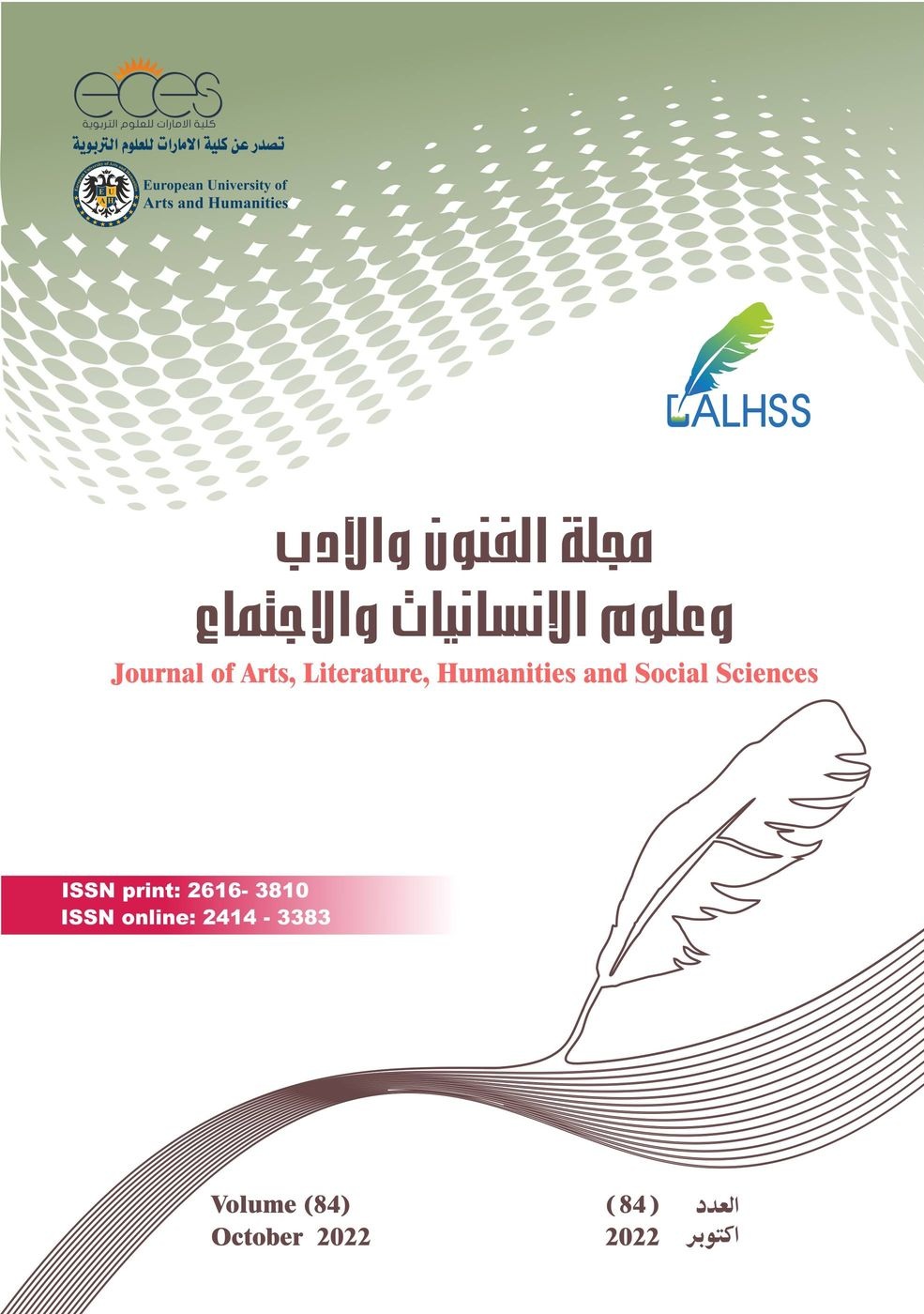The Semiotics of Passions between Simulated Desire and Possible Worlds
(Frankenstein's novel in Baghdad as a model)
Abstract
This thesis stems from the semiotics of Grimas and Fantoni in analyzing the passions in the Arabic Novel; Taking from the Frankenstein in Baghdad novel as a model for the study, by reconsidering the project of these two researchers according to Umberto Eco's concept of possible worlds, and according to René Girard's studies on the importance of adding the mediator in the actants model of Grimas based on a postulate that states that all desires are simulated desires. We were not limited by the procedural tools presented by the researchers in analyzing the passions, according to a actants model identified by Grimas previously in his studies on the semiotics of act. Rather, it went beyond that to consider the role of the mediator in this actants model, and his role in creating or transforming desires. It also discussed the role of possible worlds in shaping the phoric sketch, the transformations of the narrative programs that produce those sketchs, and the basic, deep structure of passions in the novel. Also, this structure was closely linked to the main theme or the message that the author was trying to convey about the "Gulf Crisis and Violence.
References
2. أحمد السعداوي. (2013). فرانكشتاين في بغداد، رواية. بيروت- بغداد: منشورات الجمل.
3. أحمد عبد الله. (2019). تعرية الأنساق الثقافية وتقويض الهوية في رواية فرانكشتاين في بغداد. مجلة أبحاث البصرة للعلوم الإنسانية، مج 44، ع 2، الصفحات 1-20. تم الاسترداد من مجلة أبحاث البصرة للعلوم الإنسانية، مج 44، ع2.
4. أمبرتو إيكو. (1996). القارئ في الحكاية،التعاضد التأويلي في النصوص الحكائية، ترجمة: أنطوان أبو زيد. بيروت-الدار البيضاء: المركز الثقافي العربي.
5. جاك فونتاني، و أ. ج. غريماس. (2010). سيميائية الأهواء، من حالات الأشياء إلى حالات النفس، ترجمة وتقديم وتعليق سعيد بنكراد. بيروت- لبنان: دار الكتاب الجديدة المتحدة.
6. جميل الحمداوي. (23 نوفمبر, 2016). الاتجاهات السيميوطيقية، التيارات والمدارس السيميوطيقية في الثقافة الغربية. تم الاسترداد من موقع الثقافة للجميع: http://hamdaoui.ma/news.php?extend.76.1
7. دليلة زغودي. (8،9،10، نوفمبر، 2015). السيمياء والنص الأدبي، صدى مدرسة باريس بين سيمياء العمل وسيمياء الأهواء. الملتقى الدولي الثاني. الجزائر: جامعة بسكرة.
8. رينيه جيرار. (2008). الكذبة الرومانسية والحقيقة الروائية، ترجمة رضوان ضاضا. بيروت: مركز دراسات الوحدة العربية.
9. رينيه جيرار. (2009). العنف والمقدس، ترجمة سميرة ريشا، مراجعة جورج سليمان. بيروت: مركز دراسات الوحدة العربية.
10. كينيث براناه (المخرج). (1994). فرانكشتاين [فيلم سينمائي].
11. ماري، شيلي. (2017). فرانكشتاين، تر فايقة جرجس حنا. المملكة المتحدة: مؤسسة الهنداوي.
12. محمد الداهي. (2005). تجليات الأهواء في رواية الضوء الهارب لمحمد برادة. مجلة فكر، العلوم الإنسانية والاجتماعية، ع 6، الصفحات 111 - 123.
13. محمد الداهي. (يناير- مارس, 2007). سيميائية الأهواء. عالم الفكر، مج 35، ع3، الصفحات 247- 312.



